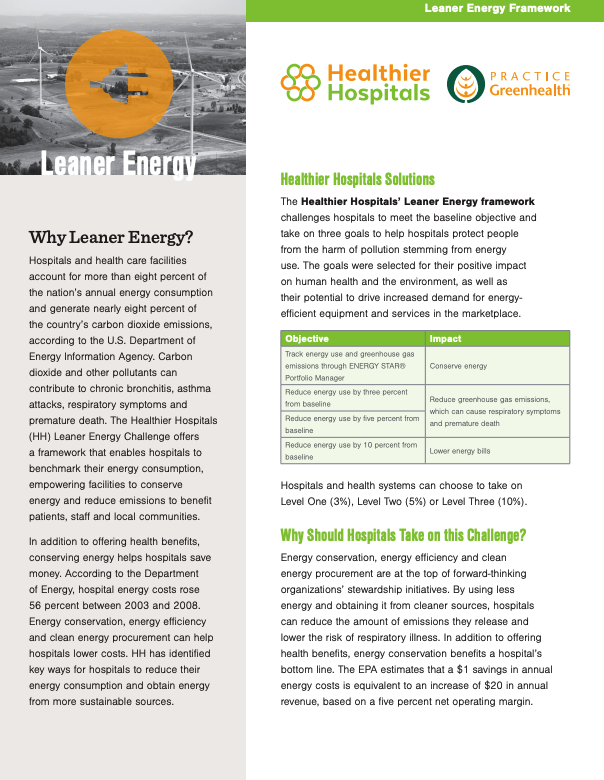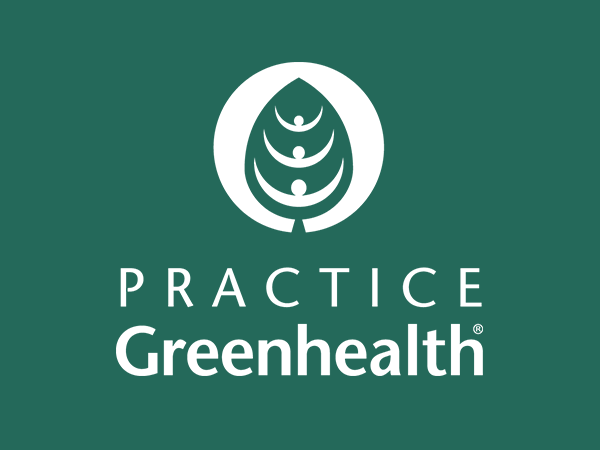Tools and resources
Featured Tools & Resources
Leaner energy fact sheet
- Energy
- Guide

Guidance to achieve green cleaning goal
- Guide
- Chemicals
- Green Cleaning

Greenhouse gas reduction toolkit
- Climate and Health
- Mitigation
- Greenhouse Gas
- Toolkit

Greenhouse gas inventory tool
- Climate and Health
- Mitigation
- Greenhouse Gas
- Toolkit

Leadership pitch slides
- Climate and Health
- Greenhouse Gas
- Mitigation
- Toolkit
How-to guide
- Climate and Health
- Mitigation
- Greenhouse Gas
- Toolkit
Executive summary
- Climate and Health
- Mitigation
- Greenhouse Gas
- Toolkit
Partners HealthCare: Filtered water
- Less Waste
- Waste
- Solid waste
- Water
- Tap water access

Partners HealthCare and Roxbury Technology: Toner and ink recycling case study
- Case Study
- Waste
- Solid waste

Vidant Health: Waste reduction case study
- Waste
- Solid waste
- Case Study

Join Practice Greenhealth
Practice Greenhealth is the health care sector’s go-to source for information, tools, data, resources, and expert technical support on sustainability initiatives that help hospitals and health systems meet their health, financial, and community goals.
